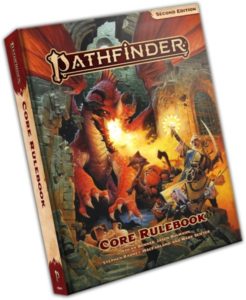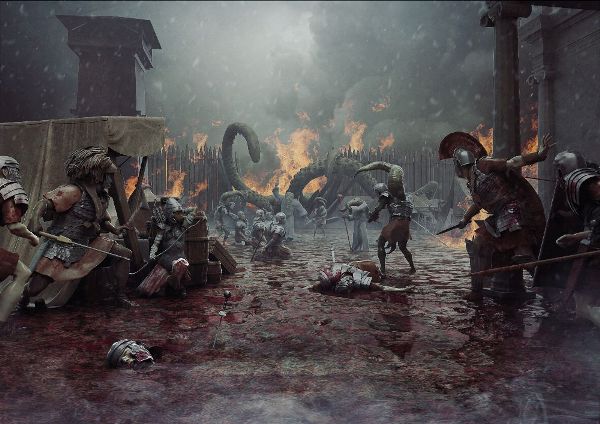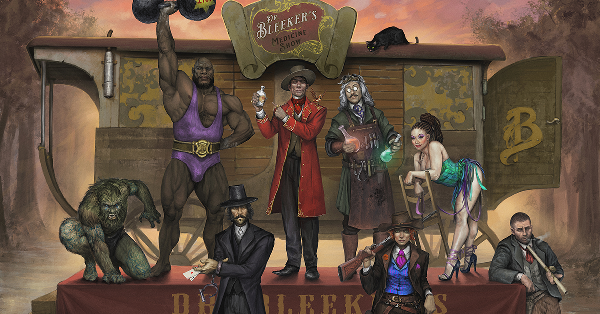
Pathfinder Second Edition
Pathfinder Second Edition is an epic fantasy role-playing game, written by Logan Bonner, Jason Bulmahn, Stephen Radney-MacFarland, and Mark Seifter and published by Paizo.
By Aaron T. Huss

Learn more about Pathfinder Second Edition here
Purchase Pathfinder Second Edition here
Find other Pathfinder Second Edition posts here
Pathfinder Second Edition is a product of the second, mass-playtest performed by Paizo to improve upon the Pathfinder legacy they had carved out in the industry. Instead of reviewing Pathfinder as a tabletop role-playing game, this is a review specifically about Second Edition.
To say that Paizo has learned a thing or two since Pathfinder was first released would be an understatement. At times they have blazed new trails and at other times they clearly found interest in other RPGs and paid close attention to how those books were changing. This is quite evident in the Second Edition core rulebook, but more on that later.
It was stated time and again that Pathfinder was little more than Dungeons & Dragons 3.75… a revised/updated/improved edition of the 3.5 ruleset of Dungeons & Dragons. While this was a great tactic to draw in an existing fanbase and create a baseline for a quickly growing fanbase, it would never hold-up over time. The most popular games in the industry, and even some of the not-most-popular games, mature over time. Fans always find ways to poke holes here, raise questions there, and look toward their favorite publishers to keep up-to-date with trends in the industry. Pathfinder (first edition) was a great start, but it didn’t necessarily establish the brand other than being the latest rendition of the OGL, compatible with the existing Dungeons & Dragons 3.5. Although I don’t know what went on in the minds of those within Paizo, it is clear from Pathfinder Second Edition core rulebook that they were determined to establish the Pathfinder brand and create something completely their own!
When you open the book, the first thing you notice is that Pathfinder Second Edition contains a fresh new layout compared to first edition, although this layout is prevalent in Starfinder. The layout techniques and artwork sizes are more aligned with other new RPG books from major publishers and large Kickstarter campaigns. Although to tie this book to the Pathfinder line, you will notice the same iconic heroes featured in first edition books and the Pathfinder Adventure Card Game. These iconic characters have pretty much become the “look” of Pathfinder and creates a homogeneous feel across its line of core books.
The second thing you notice is the presentation of the book. The first edition book jumped straight into the meat of the game, much like its D&D predecessors, but second edition starts by providing an overview of how characters are constructed to prepare you for what’s to come in the rest of the book. This too has become a staple in many new RPG core books and does a great job of laying out the very basics without adding complication. You will also notice that second edition has added Pathfinder’s iconic goblins in for character creation, right in the core rulebook. This too plays to the “look” Pathfinder has developed throughout the past years.
Paizo is also taking steps to update the basic terminology of Pathfinder here and there to coincide with social changes and the perspective of younger generations. “Races” no longer exist; they are now “Ancestries”. I personally always felt the term “Races” was awkward as it didn’t really match the purpose of those backgrounds on a grand scale. I like “Ancestries”, but I also like other terms as well. After you choose an Ancestry, you pick a background that represents the character’s upbringing and then the class, which follows the class mechanics as before. However, the presentation of these classes is much better as the base attributes (like hit points, size, speed, etc.) are picked-out in a very easy-to-read sidebar. In addition to the traditional classes, you will find the Alchemist class in this new core rulebook.
One of the mechanical aspects that appears to have been a focus for revision are Skills. The list of Skills has been scaled-down and improved along with a well-designed table that presents each skill, the Ability it’s linked to, untrained actions you can perform with that skill, and trained actions you can perform with that skill. In addition to cleaning-up the list, the implementation of Skills has been simplified. Instead of assigning values to a Skill and increasing those values by 1, Skills are determined by proficiency – Trained, Expert, Master, and Legendary. The proficiency determines the bonus added, but this greatly simplifies how Skills are maintained and advanced. This is also reflected as such on the new Character Sheet.
Feats, Equipment, and Spells haven’t really changed enough to warrant much discussion. They may have been improved, revised, or clarified, but they generally work the same. The presentation is much nicer and I like how it is organized. Otherwise not much to talk about.
Combat is another mechanical aspect to have been a focus for revision. In fact, combat has changed significantly and has completely established a new method for OGL games, distancing it from D&D. Combat now uses action points, and each character gets 3 action points to use. You can choose from single actions, short activities (which require 2 or 3 actions), reactions, and free actions. What you are capable of doing in a given round depends on what you want to do and how you spend those action points. Throughout Pathfinder Second Edition, actions, Feats, and abilities are denoted by what type of action it is or how many action points it requires. This is by far my favorite update to Pathfinder as I found the old method clunky and too limiting. But that’s just my preference.
In addition to Combat, dice rolls have changed as well. Critical Success occurs when you roll 10 or more above your DC. Critical Failure occurs when you roll 10 or less below your DC. Bonuses are based on proficiency rank. Critical Success and Failure may have differing results depending on what type of roll is made. Things like that.
Finally, the other major change I want to point out in Pathfinder Second Edition is Golarion. This new core rulebook contains an overview of Pathfinder’s default setting and its background as The Age of Lost Omens. This is not a gazetteer and merely provides a glimpse of what is there and what types of adventures you can create. However, the biggest benefit you get is you now get to see what these different regions of Golarion are like without having to buy other books!!! You quickly learn that Paizo has designed Golarion so that each region covers a different genre-aspect of epic fantasy. This includes pirate, Arabian, dark fantasy, Egyptian, horror, urban, and more. This section also provides a look at the who and what in Golarian such as creatures, organizations, religion, and more.
All of these revised mechanics and presentation wouldn’t be complete without a fancy new character sheet. Pathfinder Second Edition provides an updated character sheet that I feel makes maintaining your character’s mechanics easier. It’s a bit of an ink killer, but I’m sure you can print it in black and white with little problem.
All in all, I really like Pathfinder Second Edition and the changes that have been made. I actually found Starfinder to exhibit a superior presentation compared to Pathfinder, and I’m glad to see this second edition core rulebook follows that presentation. Not only does the book look great, but it steps away from being D&D 3.75 to truly solidifying itself as Pathfinder!!


